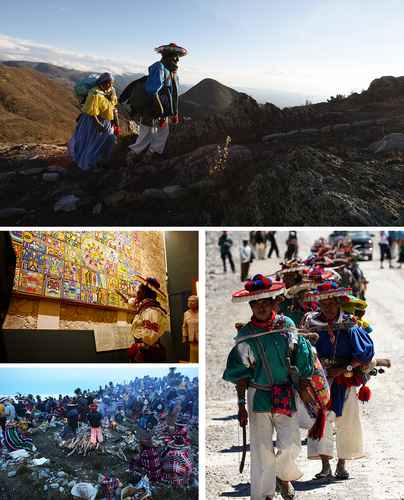Chronology of the Wixárika Route

Chronology of the Wixárika Route
La Jornada Newspaper, Saturday, July 12, 2025, p. 3
1998
The civil association Conservación Humana, which has supported the Wirárika people, brought the issue to a meeting of experts on World Heritage at the United Nations Educational, Scientific and Cultural Organization (UNESCO).
That year, the ceremonial corridor was inscribed on the global network of sacred natural sites of the multilateral organization's Division of Ecological Sciences.
2003
Human Conservation is approaching the World Heritage Directorate of the National Institute of Anthropology and History (INAH) to propose a future UNESCO nomination.
2004
The Huichol Route through the Sacred Sites to Huiricuta is inscribed on Mexico's UNESCO indicative list.
2009
Decree establishing the Ruta Huichol State Park in Zacatecas, with more than 60 hectares of sacred landscapes and 125 kilometers of ritual trails.
2011
Foundation of the Wixárika Regional Council for the Defense of Wirikuta and its Sacred Sites. It unites the communities that live and travel the route annually in the fight against mining companies.
At the Dialogue for Peace conference during Felipe Calderón's term, two representatives of the Wixárika Regional Council requested support from the INAH to inscribe their sacred sites on the UNESCO list.
2012
Formal meeting of the Wixárika Regional Council with members of the UNESCO World Heritage Center and officials from the Ministry of Foreign Affairs, Culture, and INAH regarding the nomination, which emanates from the Wixaritari communities.
Two weeks later, a department of the National Council for Culture and the Arts submitted the application for the Intangible Heritage Convention on the urgent safeguarding list. Wixárika communities, who were not consulted, sent a letter to UNESCO to halt this candidacy, believing their traditions were not at risk and that the important thing was the preservation of their sacred sites (La Jornada, June 11-12, 2012).
2015
The first technical file is finalized and sent to the UNESCO delegation for delivery to the World Heritage Center. At the request of the Ministry of Economy, at a time when there was clear support for the mining companies, the document is not submitted.
2021
The Wixaritari communities are once again pushing for the World Heritage List. They sent a letter to President Andrés Manuel López Obrador requesting that the issue be reopened.
2022
The Justice Plan for the Wixárika, Na'ayeri, O'dam, and Mexikan peoples is launched.
2023
López Obrador signed a decree prohibiting mining companies from continuing exploitation at five sacred sites: Wixárika, Na'ayeri, O'dam or Au'dam, and Mexikan.
That year, the Comprehensive Management, Conservation and Safeguarding Plan (2024-2030) was completed.
2024
The new version of the nomination for the World Heritage List has been submitted.
With information from INAH and Francisco Vidargas, head of the institute's World Heritage Directorate
Three decades of struggle for the sacred path

▲ After a struggle lasting nearly 30 years, the decision on the inscription of the Wixárika Route on the UNESCO World Heritage List will be finalized this weekend in Paris. Activists say the declaration is encouraging news for this indigenous people and their allies, who are fighting mining concessions. The INAH (National Institute of Indigenous Peoples of the Amazon), which is promoting the initiative at the request of the civil association Conservación Humana (Human Conservation), announced that the trail's outstanding universal value is based on the connection between sacred sites and essential elements of that tradition, such as fire, rain, corn, peyote, the golden eagle, the wolf, and the deer, through sophisticated ritual activities that encompass farming, hunting, gathering, and fishing. In the images above and below, Wixárika people from Real de Catorce, in San Luis Potosí; below, pilgrims in Mezquitic, Jalisco; and in the middle, Santos de la Torre in front of one of his beaded murals. Photo José Carlo González and INAH
La Jornada Newspaper, Saturday, July 12, 2025, p. 4
jornada




